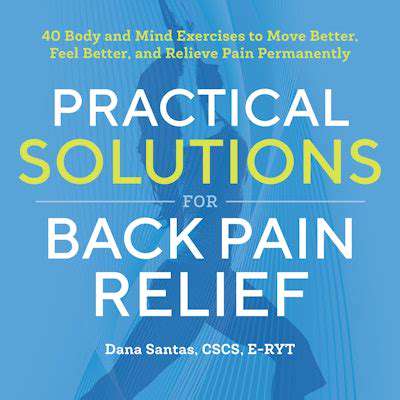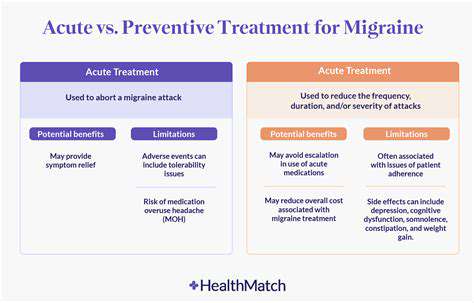Athletes and Headaches: Prevention and Treatment
The Role of Hydration and Nutrition in Preventing Athlete Headaches
Hydration Strategies for Headache Prevention
Maintaining optimal hydration is crucial for athletes, as dehydration can significantly impact performance and increase the risk of headaches. Proper hydration involves consuming enough fluids throughout the day, not just before, during, and after exercise. This includes water, sports drinks (if needed), and other hydrating beverages. Athletes should pay attention to their thirst cues and adjust their fluid intake accordingly, considering factors like the intensity and duration of their training sessions and the environmental conditions. Dehydration can lead to a cascade of physiological effects, including impaired blood flow, electrolyte imbalances, and reduced cognitive function, all of which can contribute to headache development.
The key is to develop a hydration plan that works for you. Consider carrying a water bottle or hydration pack during training and competition. It's also important to listen to your body's signals, and adjust fluid intake accordingly. For instance, if you're sweating profusely, you'll need to replenish fluids at a higher rate. Remember, consistency is key – staying hydrated regularly is more effective than trying to catch up on hydration only when you feel dehydrated.
Nutritional Considerations for Headaches
A balanced diet rich in essential nutrients plays a significant role in preventing athlete headaches. Focus on whole foods, including fruits, vegetables, lean proteins, and whole grains. These foods provide the vitamins, minerals, and antioxidants necessary for optimal bodily functions and can help regulate blood sugar levels, which are sometimes linked to headaches. Choosing nutrient-dense options over processed foods is vital for long-term health and performance.
Consuming adequate carbohydrates, especially complex carbohydrates, is also crucial. These provide sustained energy for workouts, which may help prevent fatigue-related headaches. Be mindful of potential food sensitivities or allergies that might trigger headaches. Keeping a food diary can help identify patterns and pinpoint potential triggers.
Electrolyte Balance and Headaches
Electrolytes, such as sodium, potassium, and magnesium, are essential for nerve and muscle function, and their imbalance can contribute to headaches. Athletes who sweat heavily during training or competition lose electrolytes through sweat, making it critical to replenish them. Sports drinks or electrolyte tablets can help maintain electrolyte balance, but a balanced diet also plays a role. Fruits and vegetables, in particular, can provide essential electrolytes.
Understanding your sweat rate is key to effective electrolyte management. Consider using sports drinks tailored to your sweat profile to ensure you're replacing lost electrolytes effectively. Don't rely solely on sports drinks; a well-rounded diet will also contribute to electrolyte balance.
The Impact of Dehydration on Headache Triggers
Dehydration is a significant trigger for headaches in athletes, often contributing to migraine-like symptoms. When the body is dehydrated, blood volume decreases, leading to reduced blood flow to the brain. This can cause vasoconstriction or dilation, which can stimulate the trigeminal nerve, potentially leading to headaches. Recognizing the link between dehydration and headaches empowers athletes to proactively manage their hydration levels.
Dietary Triggers and Headache Prevention
Certain foods and beverages can act as triggers for headaches in some individuals. For example, caffeine withdrawal, excessive caffeine intake, or fluctuations in blood sugar levels can be headache-inducing. Pay close attention to how your body reacts to different foods, particularly those high in sugar or processed ingredients, and identify any potential headache triggers. Identifying and avoiding these triggers can effectively mitigate the risk of headaches.
Keeping a headache diary can be a valuable tool. Recording the type of food consumed before a headache, the intensity of the headache, and other factors can help to pinpoint potential triggers. This information can help athletes tailor their diets to minimize their risk of headaches.
The Role of Stress and Sleep in Headache Prevention
Stress and inadequate sleep can significantly impact an athlete's overall well-being and increase their susceptibility to headaches. High levels of stress can trigger muscle tension headaches, while sleep deprivation can disrupt the body's natural processes, including hormone regulation, making athletes more prone to headaches. Prioritizing stress management techniques, such as mindfulness or relaxation exercises, and ensuring adequate sleep are vital for headache prevention.
Consistent sleep patterns and stress-reduction strategies are important for athletes to maintain overall health and reduce the risk of headaches. Creating a pre-sleep routine can contribute to better sleep quality, and incorporating relaxation techniques into the daily routine can help manage stress more effectively.












